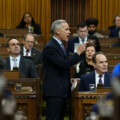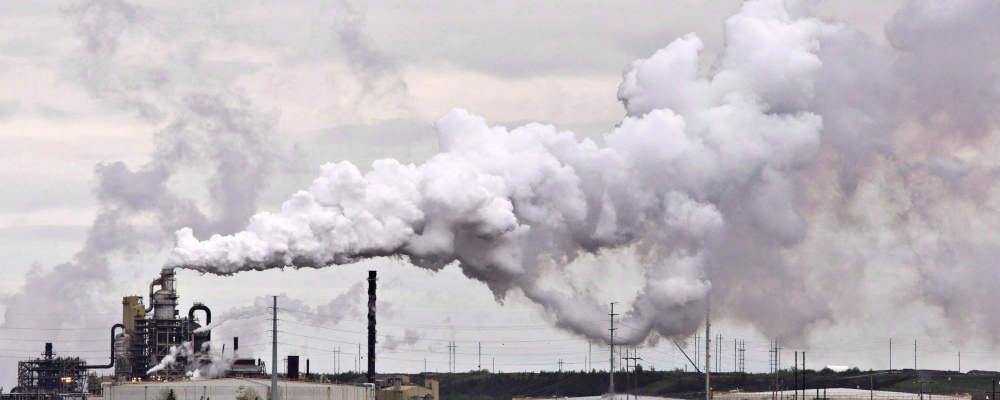Putting a price on carbon emissions was once the backbone of the federal government’s climate policies. Today, it is anything but.
In its latest budget, for example, the federal government lists its climate priorities and the tools it will use to achieve them. Interestingly, pollution pricing is rarely mentioned. And when it is, they are mostly referring to the system that large industrial emitters face rather than the one individual Canadians doSee the main figure on page 74 that details “Canada’s Plan for a Clean Economy” and note the absence of the broad retail carbon tax..
The government, it seems, is rapidly moving away from market-based approaches to lower greenhouse gas emissions and instead opting for more targeted initiatives, such as subsidies for hydrogen projects, carbon capture and storage, and clean electricity generation. Altogether, Budget 2023 might offer the equivalent of $70 billion over ten years in such tax-funded incentives.
It’s also turning to stricter regulations, such as on fuel suppliers and vehicle sales. And there is more to come. The government appears set to soon announce the most significant departure from efficient climate policy yet: a cap on emissions from the oil and gas sector.
This is a very bad idea.
First, greenhouse gas emissions have the same effect on our climate regardless of which sector or region they come from. A tonne is a tonne is a tonne.
To impose higher burdens on some activities but not others increases the cost of lowering emissions beyond what is necessary. Why incur $100 in costs to avoid a tonne in one activity when you could avoid a similar tonne for $50 somewhere else? For this reason, a cap would force emissions reductions at potentially significant costs.
With Canada’s productivity growth already lagging, achieving our environmental goals efficiently should be a very high priority. And that means broad-based and uniform incentives to lower emissions are generally best for the simple reason that the government does not know what or where low-cost emissions reduction opportunities are. Creating an incentive that we all face equally leaves such decisions in the hands of individuals and businesses, who often know best what the cheaper options are.
Second, a cap risks further undermining the strength of the government’s own case for putting a price on carbon in the first place. If we can lower emissions without a tax, the argument may go, why have one at all? We are already seeing such arguments mount significantly following the recent subsidy-heavy U.S. climate billAvid listeners of The Herle Burly podcast will be very familiar with this..
And a cap effectively invites Canadians to place blame upstream, which reinforces the misplaced idea that some emissions are more damaging than others. That goes against the entire rationale for carbon pricing, so may weaken public support.
A cap on oil and gas emissions could also undermine the government’s own legal argument for its authority to price carbon in provinces that don’t want to, as University of Alberta professor Andrew Leach noted in recent testimony to a House of Commons Committee. The consistency of prices across Canada was a key aspect of the government’s argument. A cap on oil and gas emissions detracts strongly from that.
Third, a cap on oil and gas emissions is unnecessary to achieve our emissions reduction goals.
The latest modeling by the federal government has Canada already on track to achieve our original Paris target of 30 percent below 2005 levels by 2030.
It is true the government has recently moved the goalpost and is now targeting 40-45 percent below 2005 levels by 2030, which—putting aside the wisdom of moving our targets prior to ever achieving one—may require a more stringent policy.

To be clear, specific emissions targets like these may be a misplaced goal and, in any case, are incredibly difficult for a small open economy like Canada to meet. GDP growth, population growth, oil prices, and so on, have massive implications for future emissions. The difference between the government’s own low-growth and high-growth scenarios for 2030 is roughly 50 million tonnes—more than the current emissions of the entire electricity sector.
But that point aside, we can lower emissions further and strive to achieve these more ambitious goals if we want by improving current policy rather than layering on new and higher-cost ones.
Québec, for example, is a laggard when it comes to certain climate policies. In that province, the most recent results of the carbon permit auction within their cap-and-trade system had prices that were less than half of the $65 per tonne price that prevails elsewhere. Before inefficiently ratcheting up costs on certain targeted sectors, we could first ensure those lagging behind are brought in line.
I recognize that minimizing economic costs is not the only criterion policymakers are (or should be) concerned about. No party fully embraces market-based approaches. And Canadians themselves may prefer costs to be hidden, even if that means total costs are larger.
Pricing emissions also does not always make sense, even economically. Regulations to lower methane emissions—which, interestingly, may be the biggest near-term driver of emissions reductions in the oil and gas sector—are for several reasons fairly low-cost and sometimes difficult to price.
But to effectively and efficiently lower our greenhouse gas emissions, our priority should be consistent treatment of emissions across all regions and sectors. A cap on oil and gas emissions moves us further from this basic principle. And it comes with a high cost.
Recommended for You

Strongmen and joblessness will rear their ugly heads: The Hub predicts 2026

Carney gets a majority, but Canadians vote the Liberals out in a snap election: The Hub predicts 2026

Welcome to the age of great power capitulation: The Hub predicts 2026

A rocky road for Ontario, and an unconventional CUSMA renegotiation: The Hub predicts 2026




